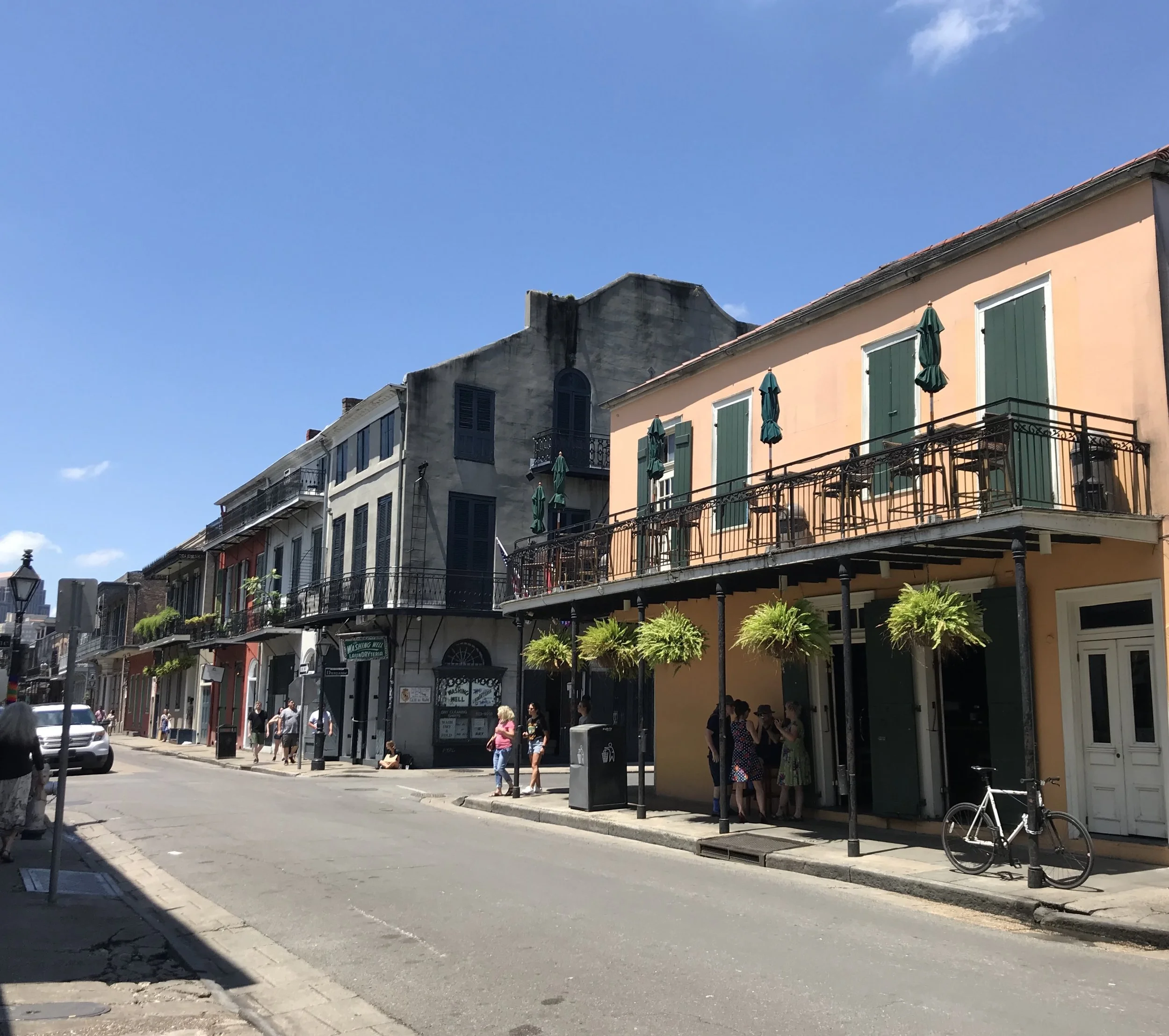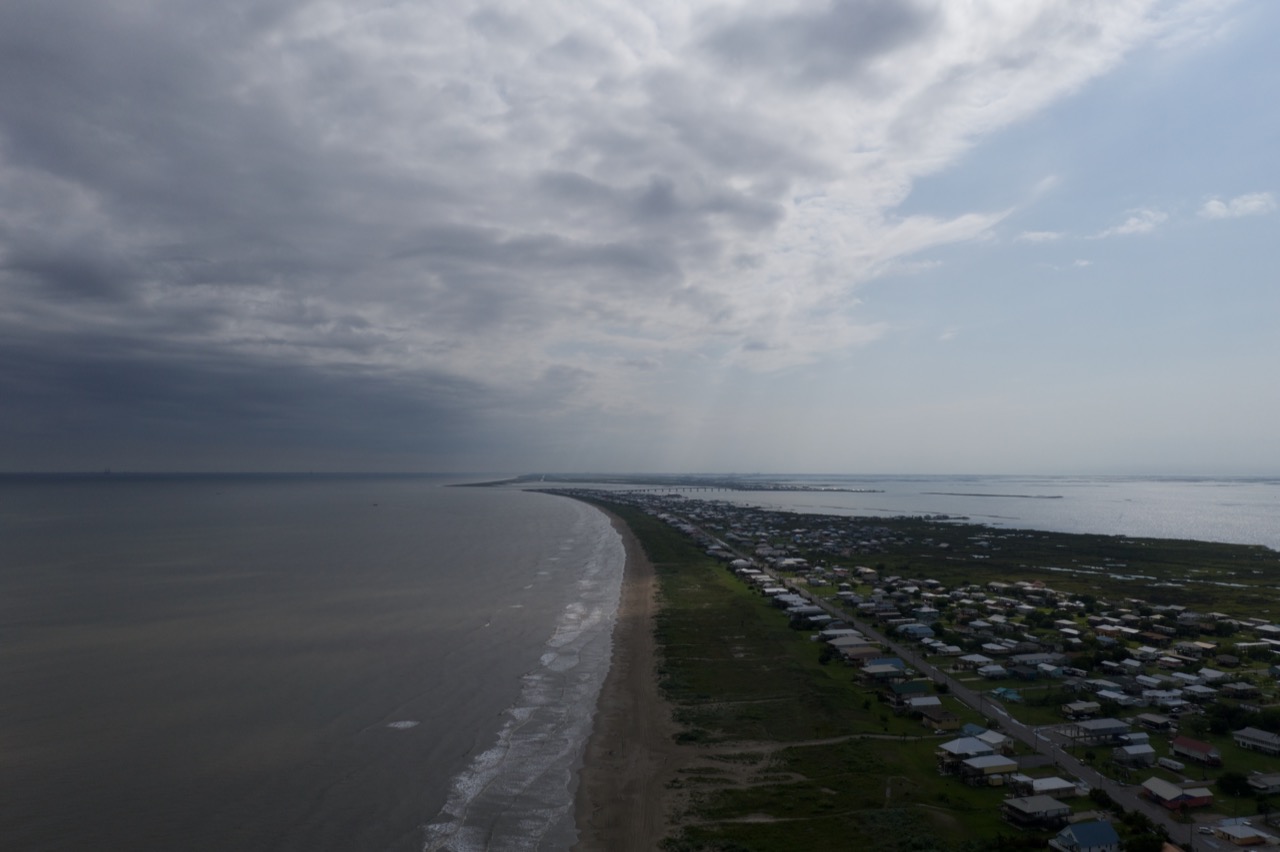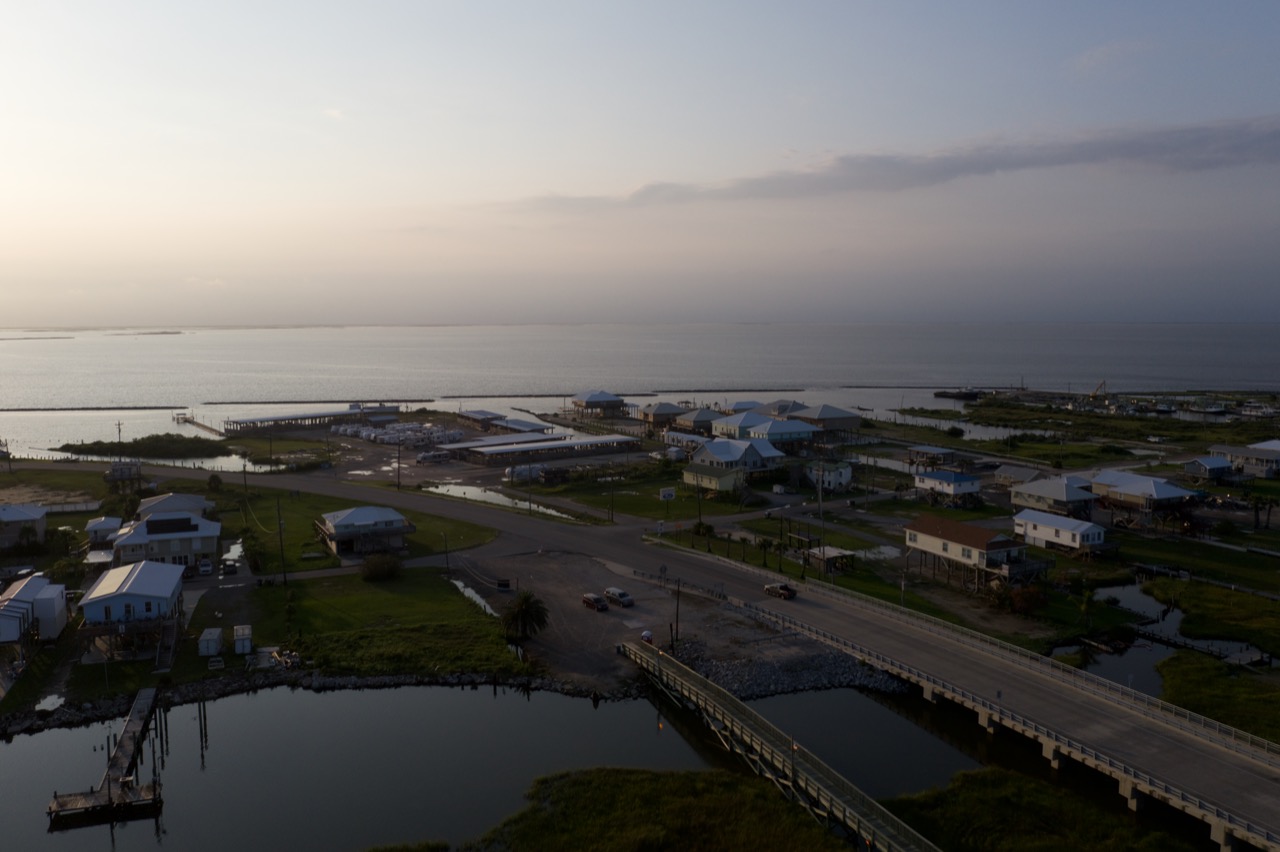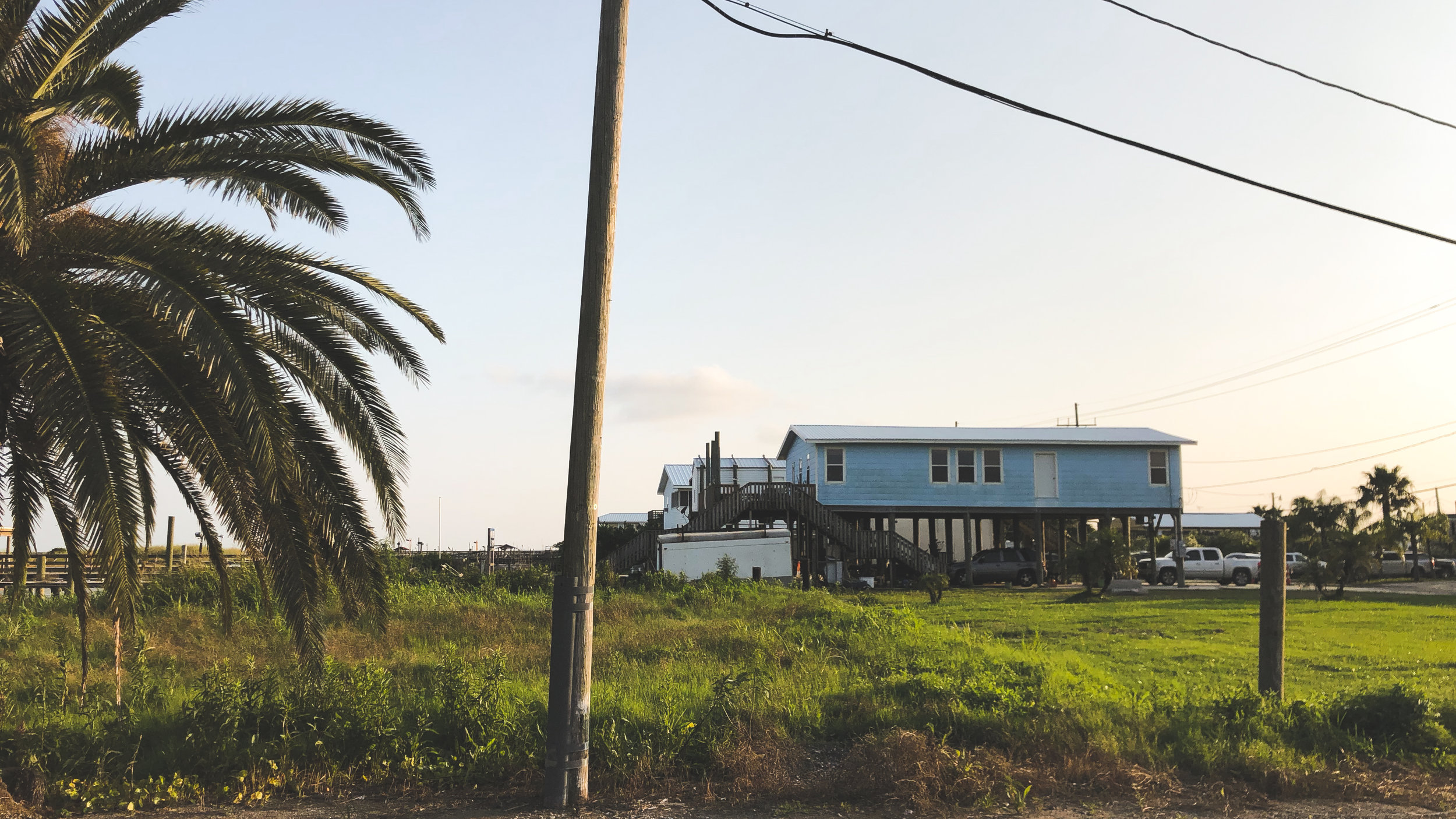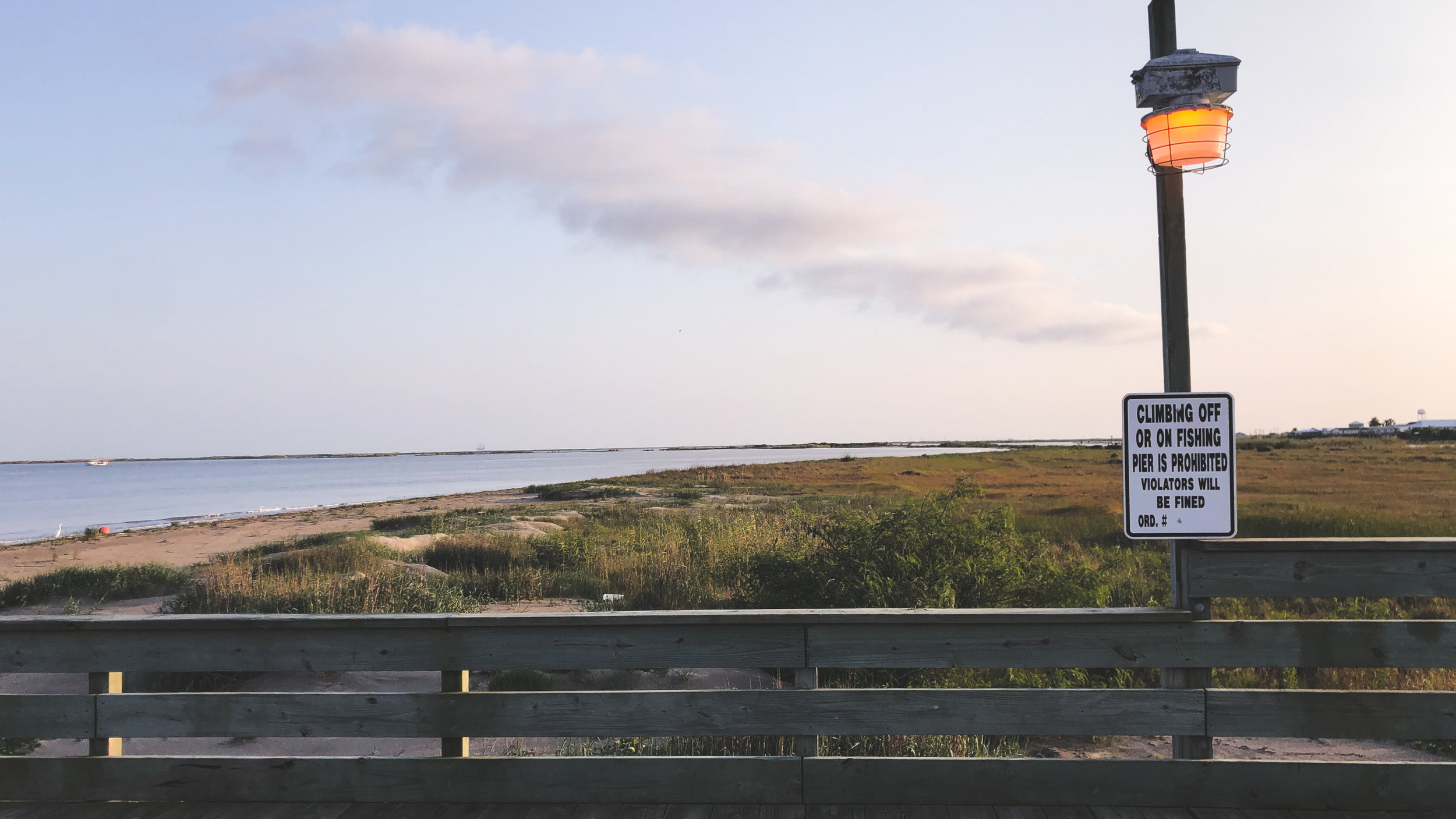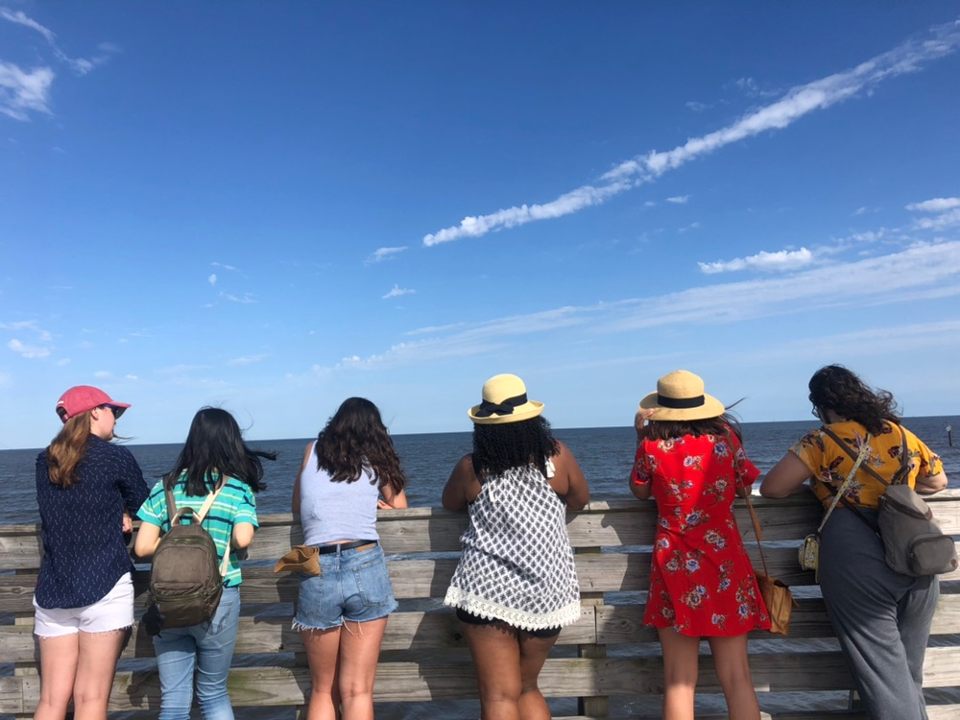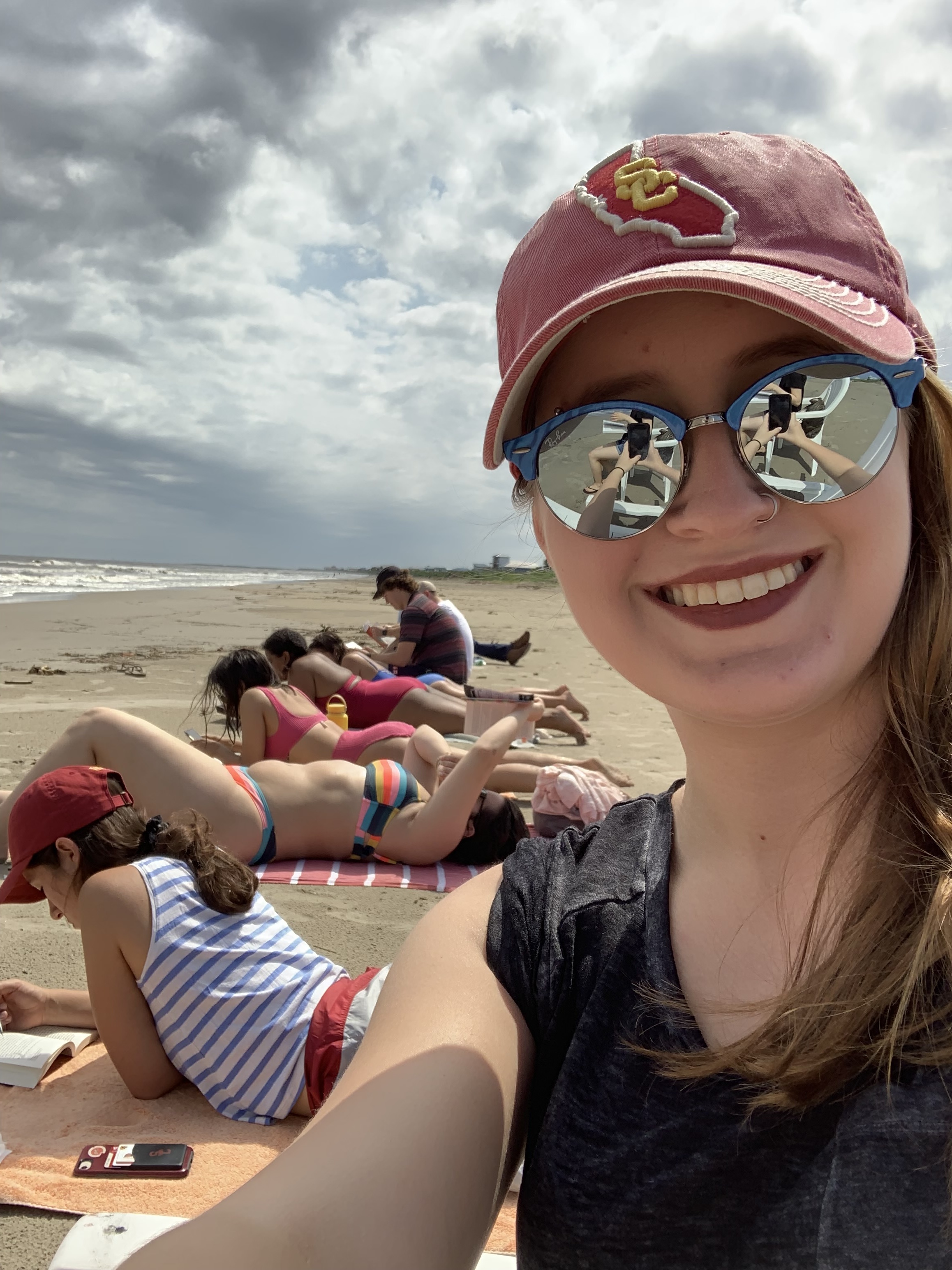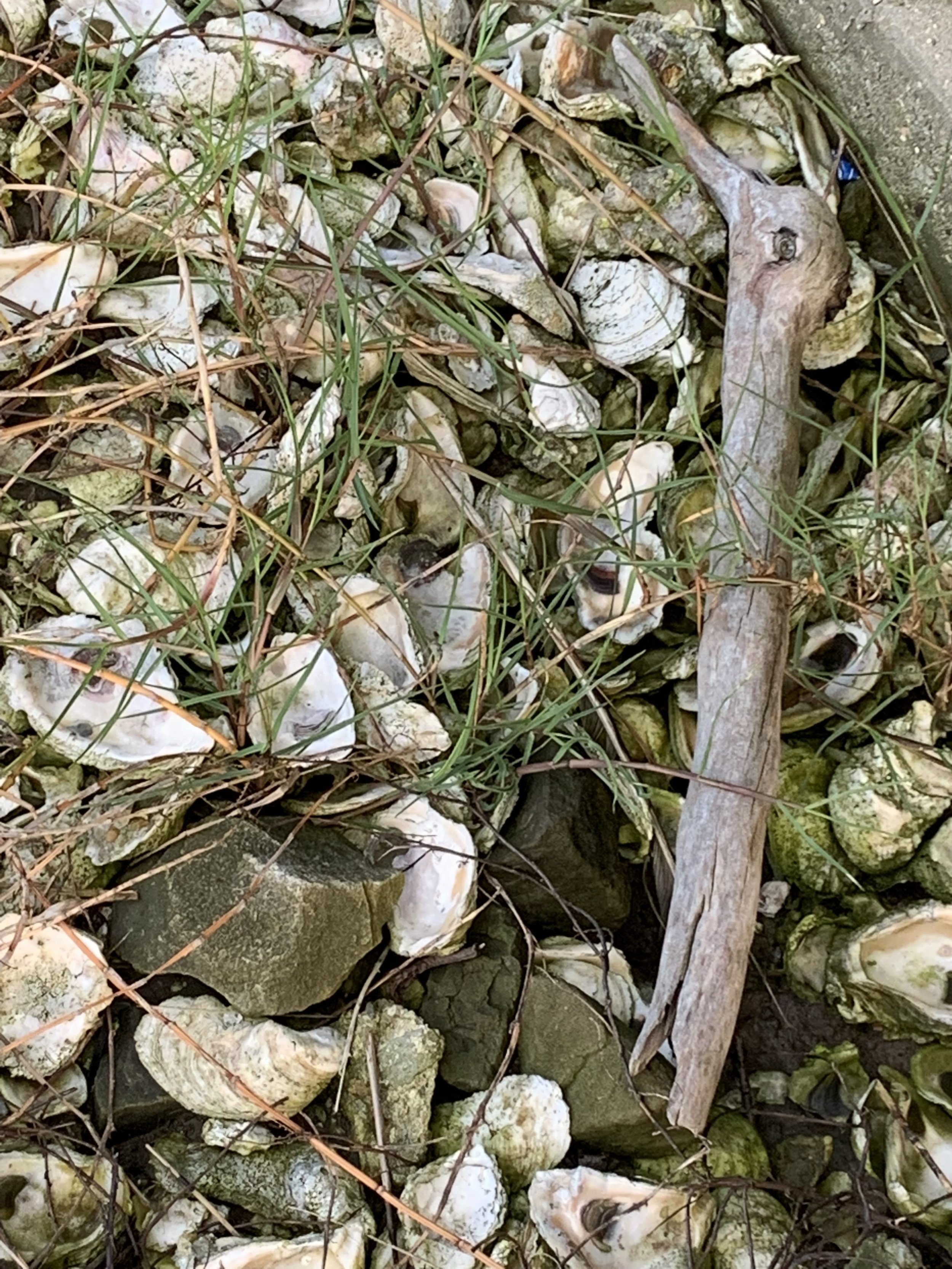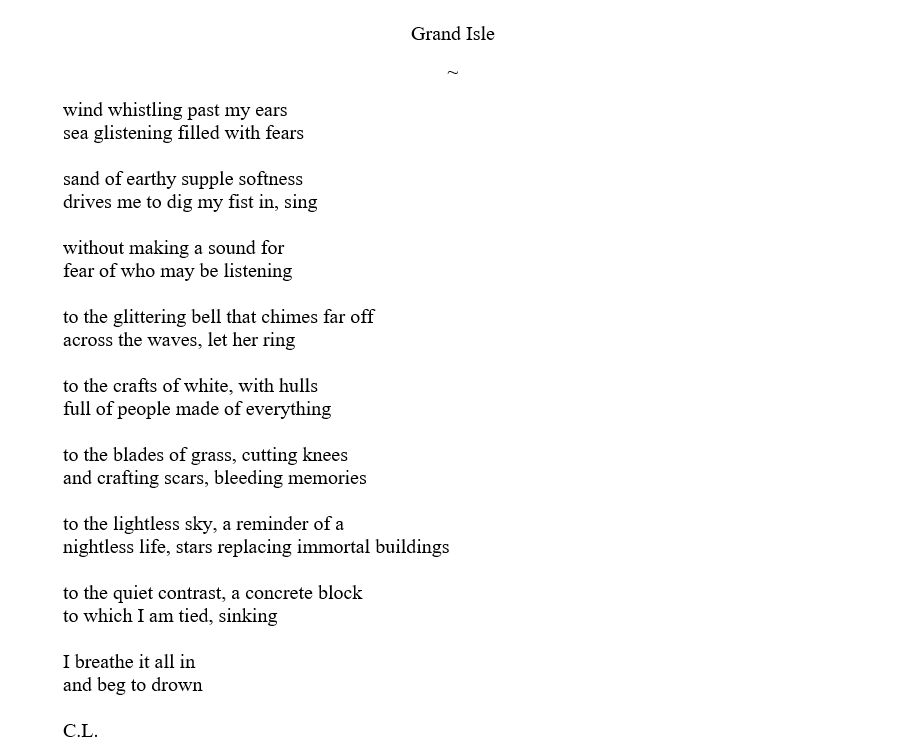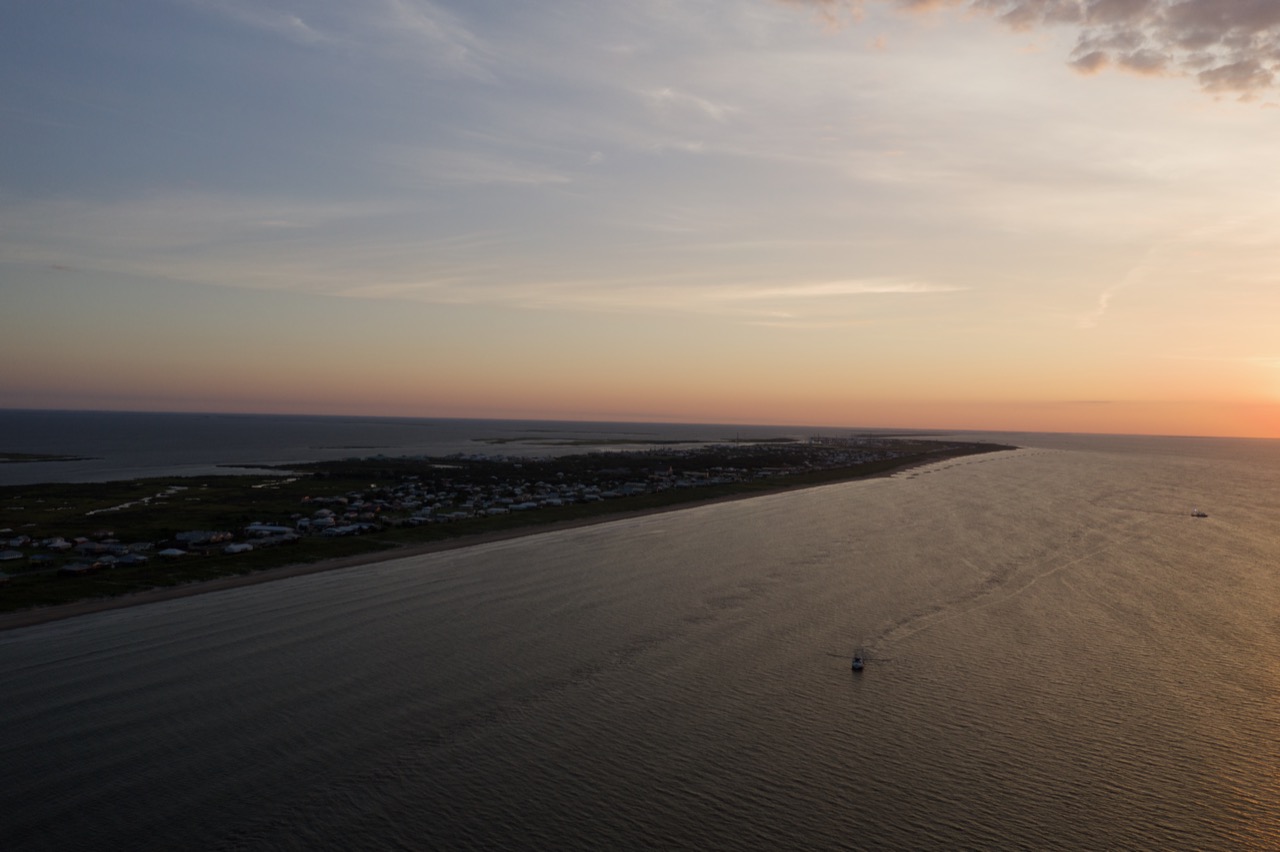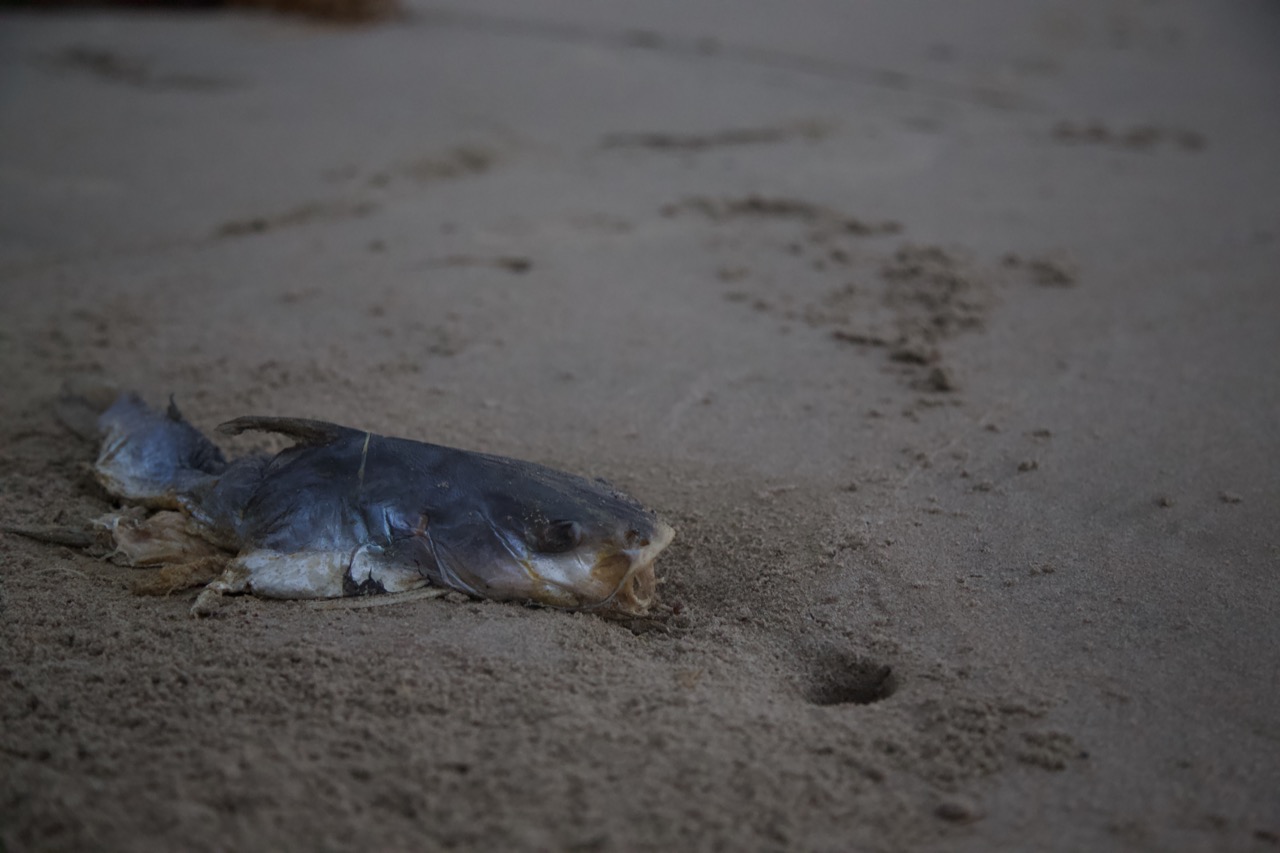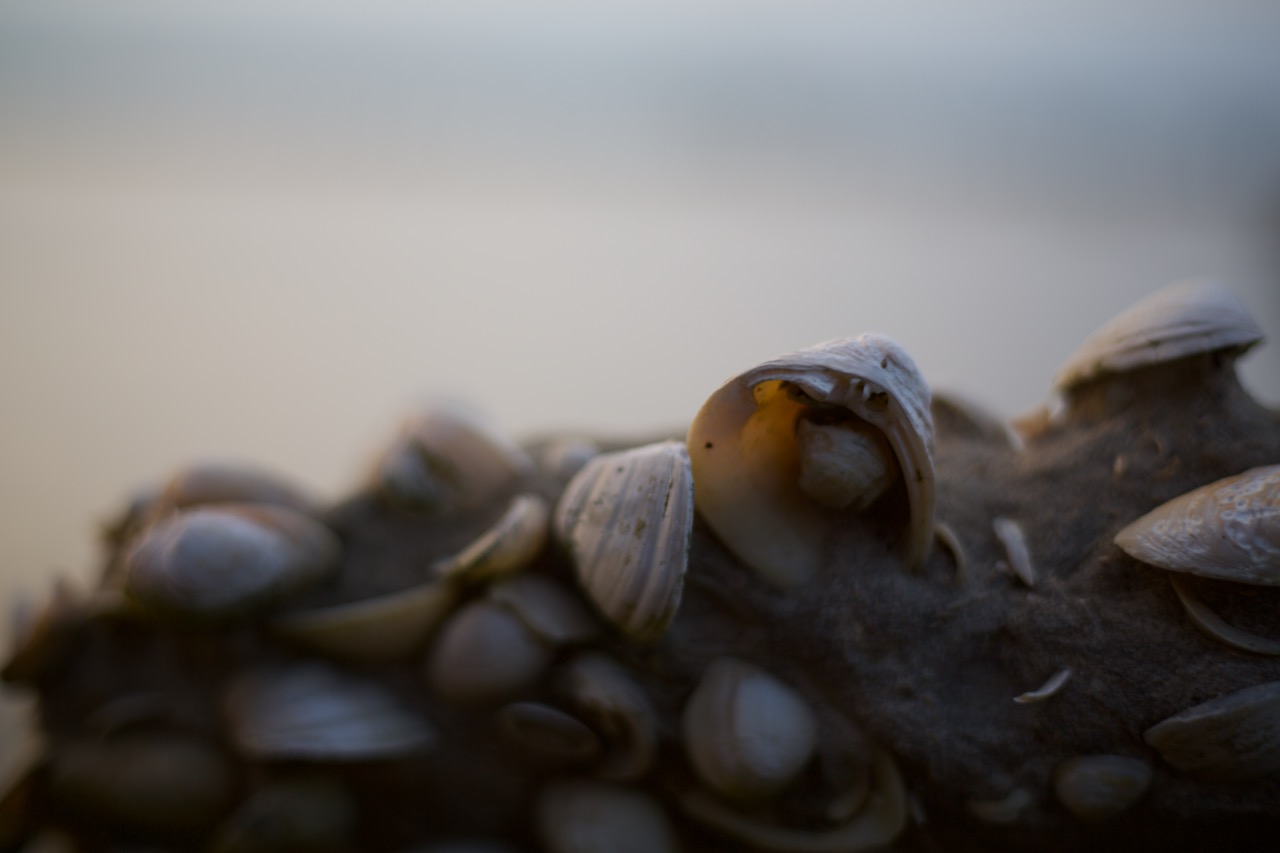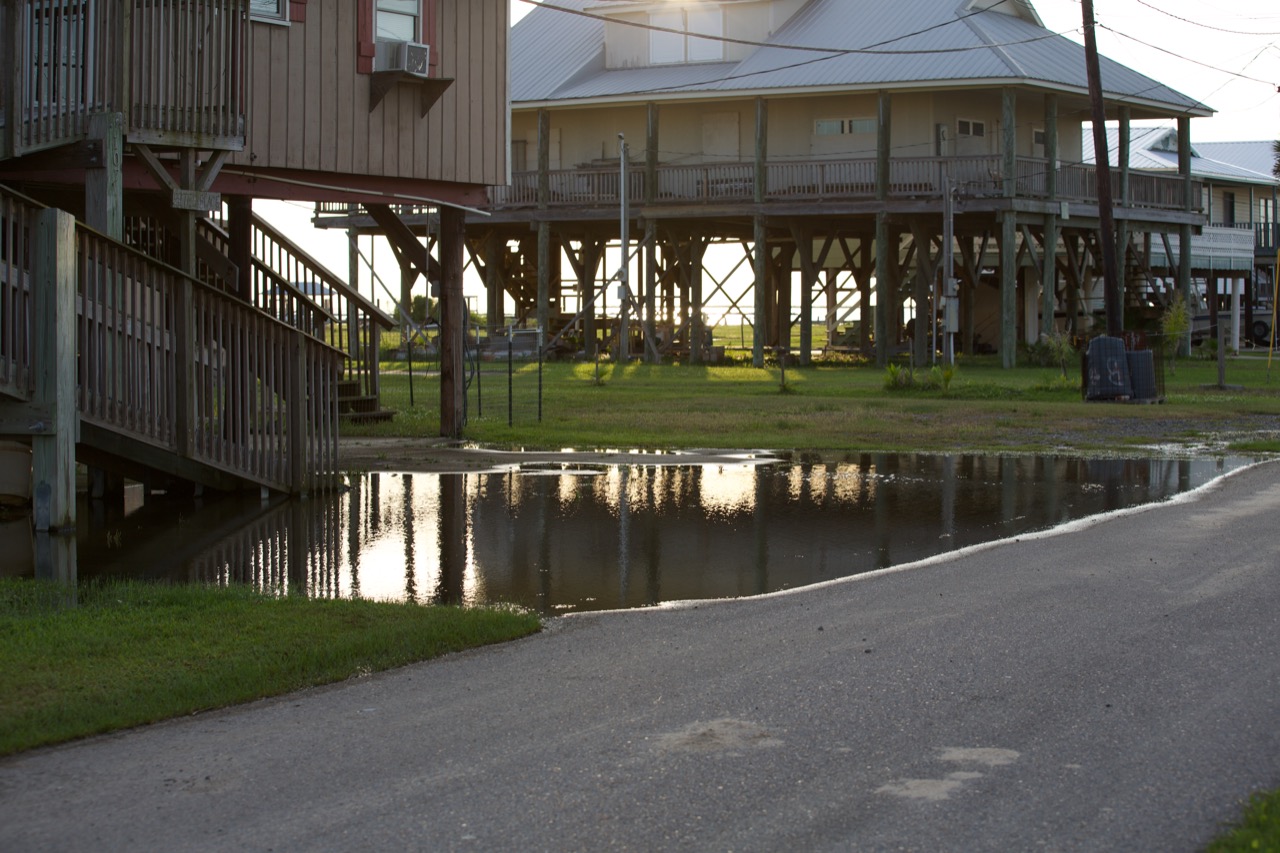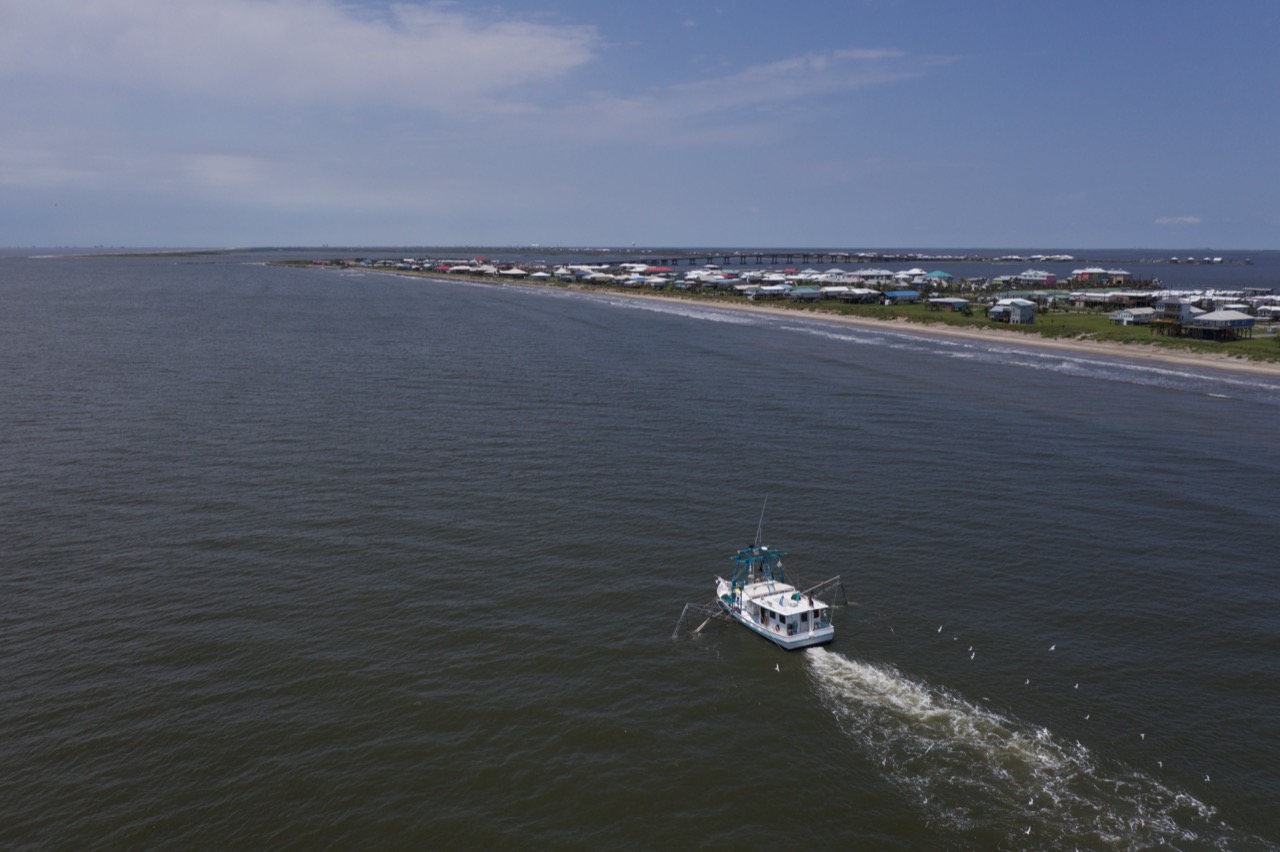Exploring New Orleans has provided me with this opportunity to explore my blackness and understand that while my upbringing is in no way similar, a beautiful celebration exists.
A Citadel of Grace
Calvin Johnson on the Sax
Vampires on Royal Street?
On Thursday we walked through the Lafayette cemetery, spreading out individually so that we might take in the atmosphere at our own pace. I wandered off into a far corner, where the trees seemed to cluster, and offer the most shade. A consequence of the trees was the heightening of an eeriness which to me, exists everywhere in a cemetery. But here, beneath the trees and surrounded by dilapidated tombstones; where the air took on a new wave of muskiness and the leaves seemed to crunch more forebodingly under my sneakers, the eeriness felt amplified.
Here, I found it easy to squint my eyes and try to picture the characters from Anne Rice’s Interview With The Vampire sneaking around, slipping between raised graves, or crouched behind tombstones. I could envision Lestat stepping out from the darkness, an evil laugh issuing forth from his lips as he walked calmly towards his victim. The young vampire Claudia fit perfectly in this scene—I could imagine her crying softly, winning the sympathy of some passing mourner, who would kneel to comfort the innocent child, never expecting the attack at their neck that would immediately follow. The cemetery provided a perfect context for beginning to read Rice’s classic story, as we settled in for the next two weeks of living in New Orleans.
And yet, as I progressed further into the story, I was surprised to find that the cemetery setting where I could so easily picture a vampire in the night was not actually the true setting of the novel. On the contrary, Anne Rice places her two vampire protagonists in an apartment above a store on Rue Royal—one of the most lively streets of the French Quarter. We visited Royal street as a group. The buildings were of a great variety of vibrant colors, and with beautiful balconies designed with careful iron work, and people bustled happily down the sidewalks, snapping photos and wandering in and out of every store they passed. I tried to picture Louis and Lestat, the vampires who were written to live here, and found it much harder to envision them here than it had been in the cemetery.
taken from Google images of Royal Street
Why, I wondered, had Anne Rice strayed so far from the traditional perception of vampires hiding out in some dark and creepy setting, prowling through the deserted night like an animal in search of prey? Why place monsters in so lovely a location—in one of the brightest and most bustling streets in America?
I found a solution while reflecting on our time in the cemetery. The notion that I have always had of cemeteries has generally been a negative one. I associate it with death, and the sadness of having to bury and leave behind someone with whom you share memories of being together and joyous. I have always interpreted that cemeteries connote sadness; each tombstone signifying the end to something that had been good.
But as I reflected on that somber walk across the cemetery grounds, and having looked through the photos I had taken there, I began to see spots of beauty in an otherwise morose setting. Many of the graves were covered with little artifacts that represented the deceased people who lied beneath them. There were flags pinned to tombs, crosses erected, even a few worn pages of Ernest Hemingway’s The Sun Also Rises kept safe in a jar—a tribute to a deceased person who had likely lived by the novel’s inspiring themes. I was touched by all these trinkets. They seemed to be an invasion of light into a place that up until this point I’d only seen the darkness of. Objects that preserved a lasting presence of the person just below them; reminders that they had once lived an entire life and that it had contained happiness.
The result of my reflection was the consideration that there is no unsurpassable barrier between death and life. Of course, one cannot float freely between the state of living and the state of being dead. What I mean to say is that death is not surrounded by solely sorrow, nor is life free of its tinges of darkness. A tombstone is decorated with beautiful flowers and flags and crosses and novels; allowing the former existence of that deceased person to still resonate joyfully in the world of the living. A vampire buys an apartment on Royal Street, and a bustling center of human activity is now invaded by the living dead. Life and death are interchangeable, in small ways—like the adorning of a gravestone—and in shockingly major ways—like the hidden presence of a monstrous being among unsuspecting humans. Having developed my understanding, it now seemed less odd to me that Anne Rice should place Louis, Lestat, and Claudia in a cute little store-top residence on the lively Rue Royal. And I can better understand the style of New Orleans funerals, which Louis describes as “a festival…a celebration of death.”
A disclaimer is necessary, I think, in defense of the vampires who I claim to be death-like figures who invade the beauty of Royal Street with their darkness. After my revelations about cemeteries having their share of beauty, and the lack of perpetual separation between death and life, I read further into Interview With The Vampire and found that the vampires (disregarding the sadistic Lestat) were difficult to hate. Again having formed preconceptions of vampires based off of the traditional legends, I had made the assumption that the vampire in the novel would be a “bad guy.” And while Lestat, and sometimes Claudia, easily fulfill that expectation with their ruthless murders and absence of remorse, Louis does not. He is unhappy with the role he must play as a vampire. He kills regretfully, always lamenting that he has been forced into this existence, out of which nothing awaits him but damnation. And in his idling hours, he sits and thinks of those many beautiful things in life that deserve appreciation. He is “in love with color and shape and sound and singing and softness and infinite variation.” Again going against the traditional conceptions of vampiric nature, Anne Rice creates a sympathetic character in Louis; a vampire who dislikes his evil nature and upkeeps a gratitude for the aspects of mortal life that are beautiful. Louis in himself is another example of an assumed setting of darkness being infiltrated by beauty; like flowers in a cemetery.
Reading The Interview With The Vampire in New Orleans allowed me to better understand Anne Rice’s characters and their behaviors. Visiting the cemetery and Royal street revealed the disconnect that existed in my mind between death and beauty. I had thought that cemeteries were strictly morose; that Rue Royal was only fun; that vampires were monsters incapable of empathy. But reading the novel while living in its setting helped me to see that boundaries are not always so strict. Beauty goes where it will, as does darkness; each following its own intuition with disregard towards our expectations. Each can go wherever—into a grave or into New Orleans. I continue on this trip, and in every place, my eye is out for beauty, knowing now that it can pervade any space—even the heart of a vampire.
Take Me to Laguna Beach
“In short, [she] was beginning to realize her position in the universe as a human being, and to recognize her relations as an individual to the world within and about her.”
We began our bookpacking journey with Kate Chopin’s heartbreaking novel, The Awakening, set first in 1870’s Grand Isle and then in New Orleans. It follows Edna Pontellier, a twenty-eight-year-old mother and wife wrestling with her role as a woman in society and searching for her place in the world. In The Awakening, Grand Isle is a glamorous vacation spot for the prominent Creole bourgeoisie of the city, fit with fine interconnected wood cabins facing a serene ocean. For entertainment, vacationers hosted starlit evenings of music, nibbling on delicate gold and silver cakes, after peaceful days of sewing, swimming, and gossiping. I was excited to roam the shore or walk the Grand Isle streets and feel like I could put myself in Edna’s shoes or see through her eyes, immersed in the world of Kate Chopin. Instead, the stark difference between Chopin’s whimsical and melancholic Grand Isle and the Grand Isle of today was made quite clear from an encounter we had with some friendly Louisianans on the beach, on one beautiful Tuesday morning.
The interaction went a bit like this.
----------------
“YOU’RE FROM LOS ANGELES?” The boy on the beach howled with laughter. His two friends smiled widely in amused bewilderment.
“YOU CAME ALL THE WAY FROM CAAAL-LEE-FORNYA TO THE MOST-SOUTH-SOUTHERN-EST PART OF LOUISIANA… TO GO TO THE BEACH?”
With this last outburst the boy, Alex, had tired himself out. Sinking into his beach chair, his head seemed to recede into his body like a soft, white turtle, as he chuckled and examined us groggily.
It was around 7:00 AM that day on Grand Isle. My newfound friends and I had been swimming in the ocean for more than an hour since rushing to the beach to enjoy a breathtaking Louisiana sunrise.
All prospects of romance and serenity were abruptly shattered by our neighbors to the left. Alex and his two friends were enjoying the latter hours of an all-nighter of partying and inebriated arguments over which Saints player was better, finally settling down around 5:30 AM at their pop-up-beach-bachelor-pad—three dilapidated folding chairs surrounded by a graveyard of empty beer cans. I’d like to think that at least 50% of the cans were crushed via can-to-skull contact, granted these dude-bros were the real deal.
While we were attempting to enjoy the glorious view of an orange-pink sky and a rising red sun—colossal tuna seiners creeping across the horizon, confidently lowering their wing-like rigs for a new day of fishing—the boys blasted country EDM on their speaker, a bizarre and jarring combination of noise that made us laugh. An air-duet of drumming and guitaring from our sunrise companions distracted my group from the beautiful scene in the distance to an arguably more intriguing one on the sand. We decided to make friends.
In typical Southern fashion, the boys instantly welcomed us as we approached, shaking our hands and offering us each a doomed can of beer. We declined their gracious offer to share in their beach breakfast.
“You came… all the way from Los Angeles… to go to Grand Isle… Grand Isle,” gasping through laughter, Alex played up the gag with exaggerated disbelief, eventually relaxing into a lethargic smile, proud of his comedy. He was shirtless, sporting a pair of sunglasses which—missing an ear rest—had fallen diagonally across his face. No attempt had been made to correct it, and apparently, the glasses were not even his. His friend, skin red and splotchy due to his girlfriend’s apparent misapplication of sunscreen, laughed as he told us to pay Alex no mind; the more than 24 hours of sleepless drinking had clearly affected his articulation. “Take me to Lag-un-aaa Beach,” Alex yelled to no one in particular. “They have some of the best lookin’ women there at Laguna Beach,” he said, with hands behind head, contemplating his sophisticated observation. The third friend—beautifully tanned with a cross necklace resting proudly on his well-exercised chest—politely reiterated Alex’s confusion at us being in Grand Isle. We explained the bookpacking program and asked for any recommendations from our new friends—they lived about 60 miles North of New Orleans but were familiar with the city. We were to go to Drago’s for oysters and Deannie’s for all other seafood dishes.
We laughed over our mutual surprise that anyone was on the beach that early. “Yeah, we thought y’all were crazy,” they said. We parted ways after our three beach buddies had their last laugh at us having sought out what was clearly a vacation spot for locals to chug beers and lounge in their family-owned camps.
So here I was, a thousand miles away from Los Angeles with twelve strangers for the very specific reason of reading books at the places in which they are set, thinking I’d be immersing myself in the luxurious beach town where our glamorous 1870’s protagonist had her grand awakening—with romantic visions of sunsets, pensive waves, and salty air—and three shirtless boys couldn’t stop laughing at us about it.
Toto, I’ve a feeling we’re not in Kate Chopin’s Grand Isle anymore.
----------------
Grand Isle is, for the most part, a long stretch of gravel road, rough at the edges where the street meets the grass, lined by elevated wooden houses with a backdrop of vibrant blue sky, unbelievably white clouds, and bright, green foliage. A relentless sunshine reflects off the uneven grey street and wood siding of the houses, producing an image like an over-exposed photograph, still beautiful through squinted eyes. No two houses shared the same architecture, and for any given row of them, the members of the pastel color wheel received fair and just representation. Rows of large houses, or “camps” as they were called there, were separated every so often by swamp-like patches of water wherein gorgeous sailboats rested in the calm afternoon. No longer a luxurious vacation spot for the affluent city folk of the 19th century, the Grand Isle of 2019 was instead home to a warm, unaffected people—full of the charm of the American South and the joie de vivre of the French Creole—with tanned legs dangling idly from golf carts speeding down the road, stopping for the occasional drive-thru daquiri (one of the more surprising Louisiana staples observed so far).
Though not the sophisticated beach destination I imagined when reading The Awakening, Grand Isle possesses a refreshing, down-to-Earth charm, where local restaurants advertise their “Never-Frozen-Burger”—which I’d say is the bare minimum—where their tastiest fried food is sold in a gas station hole-in-the-wall named after a real cat called Jim Bob, where they put playgrounds next to cemeteries, and where kind, blonde women take interest in students bookpacking in their beloved town and give them about five pounds of free Pecan pastries, just for fun (these are all things that really happened). Long gone are the years of pampered vacationing for stately Creoles and foreign visitors in Grand Isle—today, it welcomes local families and college friends, enjoying the simple pleasures that their intimate town has to offer, like sucking on some fried crawfish, fishing on a quiet lake, or laughing at the Californians who came all the way to southern Louisiana just for a swim.
The Awakening Struggle
An early morning on our last day in Grand Isle
“But the beginning of things, of a world especially, is necessarily vague, tangled, chaotic, and exceedingly disturbing. How few of us ever emerge from such beginning! How many souls perish in its tumult!”
The beginning of Louisiana and Edna Pontellier’s awakening are exemplified by this quote from The Awakening. Being here, able to drive across the swamps and stay in an air-conditioned home, astounds me. To build up this state before motorcars, powertools, and industrialization is a feat in itself. We are learning about the culture, history, and geography that helped form Louisiana, yet there is still a disturbingly vague understanding of what life was like building this state out of the mud and water. This blog post is on struggling with realizing our position in the world and the potential dangers along with the beauty of existence that conflict brings about.
The environment is a driving force of experience and practicality on Grand Isle and the surrounding bayou. Exploring the holiday island of Grand Isle, every home and most structures, such as the fire station and school, is raised higher than fifteen feet. There is the yearly danger of strong storms dumping rain in the populated man made “bowls”, overflooding of the Mississippi breaking protective levees, and water from the Gulf of Mexico being driven into the region. Hurricane Katrina broke through a levee that no one expected the storm to come from. While large storms are well known, there are many things that are considered, or learned, that one would not expect. Buildings are built with hip roofs with every side having a lip edge to drive rain, and potential rot, away from the walls and foundation. Playgrounds and other things important to a city but recognized as a potential loss are being built by green materials to reduce waste. Sewage, power, and buildings have to be specially protected and up to code. Graveyards are built above ground. While these measures do not interfere with daily life, I noticed these permeations of protection and I am sure they are appreciated when the storms do come.
Our housing built upon columns to protect from flooding
A hexagonal hip roof
Grand Isle divided by storm and sunshine. The islands dark and mysterious past is overshadowed by the holiday fun
A significant part of this struggle we cannot ignore is the community’s past. The very island of Grand Isle has a tumultuous history-as home base for Jean Lafitte and his pirates, brutal slave estates, and vacation city as leisure time and economic wealth boomed. The state is founded on blood and pain; and the state is struggling to remember its history.
Imagine building this bridge, even with modern tools
A meshed in reprieve from the mosquitoes and heat
While modern technology makes it so that where we live does not matter, the warmth and weather has a profound effect on our lifestyle. Languishing, life in Grand Isle has not a care in the world.
The environment and leisure is freeing to the body, mind and soul. Being away from the busy pace of the city, the environment gives Edna Pontellier time to relax and reflect on herself and those around her. Edna in her free time notices how many mother-women there are on the island. These mother-women are helicopter parents, who “idolized their children, worshipped their husbands, and esteemed it a holy privilege to efface themselves as individuals and grow wings as ministering angels.” She later realizes that this life of doting on friends and family and attending to trivial falsehoods is not what she wants. The struggle for Edna is what does this mean for her and what can she do about it.
Edna is not content with how life just is. We all struggle in having lives filled with pleasure versus meaning. All that is needed to have a “good” life is to “maintain the easy and comfortable existence”. Edna “could not see the use of anticipating and making winter night garments the subject of her summer meditations”. There is no need to look ahead as one is present. Long story short, Edna “was beginning to realize her position in the universe as a human being, and to recognize her relations as an individual to the world within and about her.”
With the sun and extreme humidity, I felt driven inside the home. As Mr. Pontellier “glanced restlessly over the editorials and bits of news which he had not had time read”, I found myself often picking up my phone to swipe to get updated on Facebook, Instagram, group chats, family messages, and listen to music. Coming from Los Angeles and two years of working 50+ hours a week and school, I left myself little time to be alone with my thoughts. As the holiday homes and cottages did for the characters, I felt my tension melting. While the place itself is beautiful and one would hope to naturally disconnect, there is still electricity, fast food, and service. Reading a book takes time and brings you away from the distractions. The book also in its comment on the pace of life between New Orleans and Grand Isle brings an awareness to how much stress and activities we place in our day to day. That is the beauty of bookpacking. The act of reading while traveling requires leisure time to read the novel and during expeditions into the very settings you are reading about, there is a greater appreciation for the culture of where you are.
A trawler under the golden sunrise. These fisherman are out all night!
I have been trying to find meaning in my own life after my grandfather’s death this year. As a holocaust survivor, entrepreneur, philanthropist, advocate for democracy, and an overall humorous and enjoyable person to be around, his passing inspired a need to change my life and pursue meaning. That meaning was success and wealth, but with this recent change I know I want a lifestyle that includes a family, travel, and helping others while pursuing my passions. Reading the novel added to the angst to discover what meaning and calling I want in my life. I have been exploring the USA recently through photography, and on this trip my interest in cinematography has blossomed. I cannot prescribe this trip as a reason for that interest or as the solution to find meaning in my life, but this trip has surely stoked that fire as I am learning to edit and will hopefully finish and post soon. Life is all about learning and staying open to the process.
Having been to Louisiana for less than a week, I cannot accurately speak to the character of people living here and must make some assumptions that I hope are close enough to the truth. As I explore this state for the next three weeks, I will keep my eyes, ears and mind open.
Read On!
Pier view of the bridge crossing to Grand Isle
Somewhat drained marshland
Pools of water infiltrating the land we stand on
Security and privacy is juxtaposed with a laid back atmosphere and southern hospitality in Grand Isle
Submerged in Waves of Intimacy
““She slept but a few hours. They were doubled and feverish hours, disturbed with dreams that were intangible, that eluded her, leaving only an impression upon her half-awakened sense of something unattainable.””
When I arrived at Grand Isle, LA, I walked into a pleasant co-existence that evoked desires for intimate relationships. My desires had become neglected over the recent years; and I seldom made efforts to restore my sense of intimacy. It excites me to develop meaningful relationships with my fellow book-packers because I have never been so impressed by a group of gentle individuals, from whom I learn how to tend to parts of myself that have not been nurtured. As I read Kate Chopin’s The Awakening, the tranquility settled throughout the beach house, and lulled my mind into therapeutic moments of self-reflection. And with each passing moment, whether it was snacking side by side with a peer or watching the thunderstorm with another, I made it a point to remain vulnerable to my experience, with hopes to arouse a newer sense of purpose following my academic career at USC. Prior to this rediscovery of want for intimacy, I was unaware that Edna Pontellier’s inward perception would reveal an indiscernible half-awakening of my own. I have yet to unravel the awakening in its entirety, and attach it to a meaningful external purpose.
I recall on the Sunday morning after our arrival, I set aside my journal because I was impulsed to take a walk along the shore. I listened to ¿Teo?’s “Palm Trees” as I sought guidance from the same supernatural forces that had influenced Edna to seek her universal truth. The receding waters teased my toes, but the moment I looked down, observing my dry feet as they imprinted the sand in their backwards motion, I acknowledged that there was a sort of hesitancy on my end. I did not possess the courage to dive into the gleaming waters. And soon after, I realized that I had not been as vulnerable as intended. Finally, I submerged myself into the waves, cleansing the tension within so that I may become susceptible to genuine encounters of intimacy.
I returned to the beach house, the tranquility feeling afresh on my bare skin, and continued to read The Awakening. Moments later, I fell into a light slumber, wherein my dreams appeared foreign, as though to remind me of all that will remain unfamiliar should my desires be left unfulfilled. I was solemnly touched by Edna’s unfamiliarity with self-intimacy; and it was saddening to interpret that her intimacy with Robert alluded to her silent battle with depression. I understood how her character may be portrayed as an unaffectionate “mother-wife”. The parts of herself that had not been nurtured evoked my fears of becoming so consumed in my universal truth, that I may miss my opportunity to become an affectionate father-husband. If I could have spoken to my reflection that tranquil morning, in the waters that engulfed Edna’s being, I would have demanded of the fluid self to navigate the treacherous waves, so that my inward yearning of something unattainable would be guided into a steady familiarization with intimacy.
“LAISSEZ LES BONS TEMPS ROULER”
Awoken from my slumber by an abrupt roll onto the tarmac, my heart swelled as I took in the lush Louisiana landscape lining the landing strip outside the window — we had arrived. The five months of burgeoning excitement soon settled, as quickly as it had suddenly bubbled over, into a languid contentment as heavy as the air that enveloped us outside.
I’ve dreamt of visiting New Orleans for a long time -- drawn to the idea of its vibrant people, history, and culture, engulfed by water, palpably overwhelmed by contradictions of tradition, yet comforted by silky supple trees and the rains of renewal. Somehow I knew it was an environment I knew I would thrive in spiritually. After enduring a particularly painful year, here I thought, I could breathe the air of fresh life in. I was more than ready to trade in my real-world responsibilities for a few days at Grand Isle, for nothing but long-awaited relaxation and escape into the comfort of a good book.
The drive to Grand Isle was slow and serene, marked by an unfading awe-struck gaze. Cross the river, pass the bayous, and be greeted by spacious houses on stilts, sprouting over the horizon, porches poised to capture maximum ocean breeze and summer sun. Together here arrive 12 strangers, totally unprepared for what’s to come — expectations low, morale high, and experience unprecedented.
It was my second time reading Kate Chopin’s The Awakening, yet the first time I was ready to grasp it – I started a naïve, wide-eyed optimist, unable to relate to Edna’s dismay. I came from little, but I dreamt a lot and was fortunate to have made it through my childhood emotionally unscathed. There was so much ahead of me, so much work, so much potential, always so focused that I couldn’t fathom at any point slowing down to wallow; to be dissatisfied was to surrender. I had yet to experience disassociation in my successes, yet to find pleasure in loneliness, to have experienced absolute infatuation, then ennui and restlessness as a result of fruitless passions and aspirations, continuing to drown myself in work under the pretense of fulfillment until I was unable to peel back the layers of stress as quickly as they piled on. It was time to shed that version of myself.
Life still moves too fast to understand it, but I’ve become more perceptive nuance and duality. Here now, with a greater appreciation of Edna’s struggles and direct contact with at least an echo of her surroundings, I set out to understand her awakening. She found herself on this very beach, with a misty summon to its warm waters and peaceful embrace, yet she left without answers wanting more. She came to understand all that had passed and to know everything she desired, but without a way to attain it, her melancholy grew. Edna’s tumultuous journey towards self-discovery was muted by the confines of class and femininity at the time – the relaxed atmosphere of Grand Isle invited reflection yet preached conformity. The people around her seemed shockingly shameless in their openness to her at first, yet codes existed; codes that Edna soon felt were boring and pointless. As she began to push the boundaries, the boundaries pushed back. She refused acceptance, a key of false contentment, and unlocked instead a reality beyond the threshold, one that existed out of time and out of place. The ocean, unpredictable and boundless, became a desirable placeholder for defeat.
“There was with her an overwhelming feeling of irresponsibility. There was the shock of the unexpected and the accustomed…Above all, there was understanding. She felt as if a mist had been lifted from her eyes, enabling her to look upon and comprehend the significance of life, that monster made up of beauty and brutality. But among the conflicting sensations which assailed her, there was neither shame not remorse. There was a dull pang of regret because it was not the kiss of love which had inflamed her, because it was not love which held this cup of life to her lips.
”
Today, the relics of Edna’s world still exist. The lingering community is tight-knit and amiable, exclusive in its own rights of experience, yet no longer possessive of structure and codes of grace. Here, daiquiris are sold at drive-thrus and frat stars release a havoc of sound-waves into the night to compete with the ceaseless roar of the sun-burnt sea. Here, we came together for our first communal experience outside of constraint, and our city lives became like distant memories. Our last night there bled into a sunrise spared by falsehood or fear of judgement. Here, we were free to wander the sands of solitude, if only to prepare for the unpredictable voyage upon life’s troubled waters.
“I wonder if any night on Earth will ever again be like this one. It is like a night in a dream. The people about me are like some uncanny, half-human beings. There must be spirits abroad tonight...
”
Serenity in the Sea Foam
““The voice of the sea is seductive, never ceasing, whispering, clamoring, murmuring, inviting the soul to wander in abysses of solitude.” -“The Awakening” by Kate Chopin”
My life has always been filled with literature, it transported me across oceans and airways, through continents and conflicts but most importantly, it has taken me through time. I have not always had the means to travel, so reading is how I travel the world, yet, I had never heard of the concept of bookpacking.
It was first introduced to me at an information session at the University of Southern California. “Bookpacking the Big Easy” they called it, a concept coined by Andrew Chater, that provides students with the opportunity to use books to enhance their travel and literary experience by using the novels as “portals through which to explore regional history and culture.” The concept seemed odd but exciting.
I had always thought of books as films that your mind creates based off the words of an author, but this style of reading fused with traveled seemed almost too good to be true. After all, so much time has passed since some of these books have been written, hadn’t their settings changed as well?
The answer is yes, but that does not invalidate the experience of bookpacking. It was at the Grand Isle where I was able to truly grasp that concept. While, it is no longer the Isle that Edna looked upon, there is one pivotal feature that remained the same—the ocean. It was in the ocean that I was able to be alone with my thoughts and reflect upon Kate Chopin’s “The Awakening.”
“The Awakening” follows a woman named Edna through her journey of self-discovery along with the pain and pleasure that comes with it. She feels trapped by her societal obligations coupled with, in my interpretation, her struggle with depression. Reading the novel on the Grand Isle where it is set affected me more than I was expecting. I am not entirely sure why, perhaps it is because I am a very empathetic person, or because sitting on the beach that inspired Kate Chopin to write the novel in the first place made me feel as if I were Edna myself. As of now, I am not sure if it is one reason or a combination of reasons but perhaps farther along into this bookpacking journey I will understand more. All I know is, “The Awakening” and all its beautiful prose, exhausted me emotionally.
I loved every minute of it, I couldn’t stop reading. Its subject matter was so painful, but that is what made it so beautiful to me. The fact that Chopin wrote so openly of inner turmoil, especially in her time when anything other than a perfect wife was considered taboo. It hurt me that Edna felt so alone, her emotional highs were such fun but her emotional lows left me feeling sick to my stomach. Her pain and the way she saw the world resonated with me. As her mental health began its descent, it made me realize how grateful I was to be in the Grand Isle.
“She let her mind wander back over her stay at Grand Isle; and she tried to discover wherein this summer had been different from any and every other summer of her life. She could only realize that she herself-her present self-was in some way different than the other self. -“The Awakening” ”
The Isle is peaceful and serene; it is a place of joy and relaxation and for Edna it was an escape. When it was time for her character to return to the city, it was clear to me she felt trapped in more ways than one. She was trapped with a husband whom she didn’t really love, societal obligations enforced upon women through the patriarchy, and by her own mind but when she was on the Isle, she didn’t feel trapped, in fact, she even learned how to swim.
It was swimming where I felt most connected to Edna. The ocean made me feel alive; it was cool and refreshing. In fact, one of my favorite experiences on the Isle was getting up before sunrise with some of my classmates and taking a sunrise swim, even though Chopin never had Edna do such a thing, it felt like an Edna thing to do.
The morning I finished the book, I realized I needed to decompress so I relaxed on the beach and then went for a swim. I thought of Edna’s emotional highs when the weather affected her more deeply, when the sun gently kissed her skin and enveloped her in warmth and the contrast of the cool ocean water on her skin. It was at this time where I first noticed sea foam. I had never given it much thought, only the fact that after the waves hit the sand, it appeared. As I swam through the waves, I noticed how much it tickled. It felt like little bubbles gently popping. I made me giggle, it helped me relax. It made me grateful to be alive during a time where mental health is not a taboo subject anymore, where psychology and treatments exist, where I am not alone, where I don’t have to feel as Edna felt. The sea foam brought me serenity.
Just as Kate Chopin’s character Edna understood the beauty of the Grand Isle, I too could now understand it. I think being at the location where a portion of the novel occurs exacerbated my emotions while reading. Bookpacking is such an immersive experience, I no longer have to rely on my imagination in its entirety because I have walked the shores she walked, and I now know some of what she saw.
For me, Edna’s perspective was a contrast to my own. In her time depression was a word that did not exist whereas in my time, not only are subjects like mental health being properly researched but they are also being de-stigmatized. Chopin was decades ahead of her time and I am grateful to have been offered a glimpse into her world because the novel truly came alive.
The Beauty of Grand Isle
Diving In, Learning to Swim
The beginning of my journey with Bookpacking the Big Easy started as all good adventures do: with a disaster. After a sleepless night and a ride cancellation, I arrived at the airport with little time to spare so meeting the people I’d spend countless hours with had to wait in line. The flight, while long, consisted of many power naps and a multitude of movies. Upon touching down in Louisiana, though, the world had changed around me. The second I stepped off the plane, my back and neck were drenched and every inch of my skin was slick with Louisiana’s famously humid air. The waft of heat upon exiting the aircraft, though, was the most notable. As one would be hit with hot, thick, air upon opening an oven, I was hit with the hot, thick air of the Big Easy, except there was no sheet of fresh baked cookies beyond my fogged-up glasses but in its place was the prospect of adventure and of change.
“That summer at Grand Isle she began to loosen the little mantle of reserve that had always enveloped her.”
Our first stop on the journey was Grand Isle, a popular tourist destination now and long ago. With plenty of time to kill and the perfect setting, The Awakening by Kate Chopin inhabited the hands of each bookpacker. Chopin’s novel, set in the late 19th century, follows Edna Pontellier on a journey of self discovery as she realizes that, in her view of the world and of her own place in it, she stands alone. During her vacation on Grand Isle, Edna learns to do something daring, a previously unacquired skill: she learns to swim. In learning to do something she had not been able to, Edna embraces a new sense of self and a flood of empowerment.
Sitting on the beach and gazing out into the water that she would have been essentially baptized in, reborn as a new Edna, was a surreal experience. The sound of the waves crashing to the shore and sinking back in gave a whole new dimension to Edna’s pull towards the water. The push and pull of the waves drew me further into Chopin’s beautiful crafted lines of emotional reality. Edna’s transformation in those waves thus mirrored my transformation on that beach, though mine was admittedly a much less significant change.
As a generally scared and apprehensive person, going on a trip with a group of strangers to an unfamiliar place was nothing short of daunting. There were many times when I was tempted to back out and run away from something so personally unheard of. I simply could not see myself managing to be social for any extensive amount of time, let alone the upcoming three weeks. I, like Edna, needed to make a change and grow past an impediment. So I dove right in.
For a while, I couldn’t even manage to float. Making small talk was torturous at first, as I felt the words rushing back into my lungs, drowning me, but soon enough I grew past this hiccup. Edna and I learned to float together. I made small talk, we both moved forward. Soon we both began to take the lead. I started conversations, Edna kicked her legs. Soon enough, we both fully took control of our fears and cast them aside for the new lives we wished to lead. Edna, growing into somewhat of a feminist icon with her radical (for the time) ideas of what the role of a woman is and what role an intimate relationship should serve, and I, growing into someone who can have multiple conversations with multiple strangers that lead to blossoming friendships, both have had life changing experiences on the shores of Grand Isle.
“She let her mind wander back over her stay at Grand Isle; and she tried to discover wherein this summer had been different from any and every other summer of her life. She could only realize that she herself-her present self-was in some way different than the other self.”
This summer, I expect, will be like no other. Edna Pontellier’s summer at Grand Isle led her down a path of self-discovery and growth and I expect my bookpacking journey to have much the same effect. Already, I am bearing witness to the fruits of adventure, meeting people of like minds, discovering those of like-minds and of similar interests. From mere days in a house on the beach, I gained an understanding of Edna’s new present self. Grand Isle is a place of change in its very essence, withstanding yet adapting to hurricane after hurricane. Edna, much like the properties of Grand Isle to weather, adapts to her newfound sense of self, with her beams and her flood-born height coming from her desire to be her own person through rejecting the luxuries her life as a Pontellier had gifted her.
In finding a place of her own, Edna becomes, in her mind, self-sufficient and no longer in need of the fiscal support of her husband. Much like the shifting of the architecture from the ground to the air, Edna elevates herself in her own mental standing from a dependent to an independent.
Edna’s means of changing her standing are nothing short of extraordinary either. She, much like myself, is an artist and while our mediums of choice may differ, what we draw from our craft is similar. While she may fall out of love with her passion rather quickly, she draws from it a sense of worth both figuratively and literally with it being her outlet as well as her financial security. While I have yet to make anything of my work in an economic sense, it does remain an outlet through which I express what I feel cannot be expressed. Edna does the same, expressing her anger towards the era in which she was born and the role she was forced to fill as well as her inability to conform to social standards in her makeshift artist’s loft, painting the days away.
My present self, much like Edna’s in her moments of self-sustainability, have already drifted from my past self and become another. This new self is one that would talk to and befriend eleven strangers and one who would sign up for a bookpacking trip in the first place. While my personal growth is nowhere near as drastic as Edna’s, it is just as empowering. The soft sands of Grand Isle, the silt-clouded waves that brush the shore, they have served as stepping stones and as guiding forces for both Edna and I in our journeys of self-discovery. I can only dream of a change so drastic, but, as far as summers come, this is sure to be one I never forget, full of personal growth and hopefully a lot more diving right in and learning to swim.
Footprints in the Sand
Fulfilling A Young Girl's Dream
Kate Chopin's Ocean in the Real World
“The gulf looked far away, melting hazily into the blue of the horizon.”
A dock is abandoned for unknown reasons
Beginning our trip in Grand Isle to relax, I was in awe of how much the community and state is influenced by the rivers and ocean. Growing up in Southern California, I appreciated the ocean and enjoyed surfing the west coast. Yet, our coast is vastly different than down here in Grand Isle, Louisiana. We read The Awakening by Kate Chopin, witnessing Edna’s transformation to being more aware of her own reality. The environment transformed her into becoming more introspective and she eventually committed suicide by swimming until she could not muster a return. Water defines life down here in more ways than I could have known in California.
A boat heads out for a night hall
We all know water is life sustaining. All life on Earth originated in the oceans and water continues to provide for all species. It drives the markets of the world with shipping containers and moderates the global biosystem. Water seems more essential to any other place I have been to yet threatens the state more than anything else.
The ocean and rivers drive the economy here. Picturesque, rusty trawlers slowly glide along pulling up whatever they are hunting for with massive nets. Restaurants and properties drive up in price with a water front view. Our little joy of a town spikes every summer by tens of thousands because people want to be on the coast. At night, the ocean twinkles with the lights of boats.
The ocean is open air. The ocean is freedom from our thoughts and hustle of the city. I felt the first few days here spent reading was the perfect escape from the bustling city of Los Angeles.
The sea also gives energy, for Edna “a feeling of exultation overtook her, as if some power of significant import had been given her to control the working of her body and soul. She grew daring and reckless, overestimating her strength” and finding out she can survive in the water. The first part of this line is repeated twice in the novel and it rather speaks to the power of the sea.
“The voice of the sea is seductive; never ceasing, whispering, clamoring, murmuring, inviting the soul to wander for a spell in abysses of solitude; to lose itself in mazes of inward contemplation. The voice of the sea speaks to the soul. The touch of the sea is sensuous, enfolding the body in its soft, close embrace. ”
Boat juxtaposed with the coming storm
Yet, beyond this rejuvenating and economy driving water system is danger. Hurricanes are happening at a greater rate at a higher level of extremity. I met someone on the beach yesterday, from New York, who explained how since Hurricane Katrina’s devastation, the majority of people living in southern Louisiana left and that most of the people I will see in New Orleans are immigrants from other nations and northern states. A hurricane obliterated a nearby island where characters and Chopin attended church, losing our opportunity to bookpack in that very church. A danger settlers had to deal with is the bodies of water acting as breeding grounds for mosquitoes. I have had over a dozen bits in my few days here and I cannot envision being here when Malaria and yellow fever were running rampant.
There is a running battle against the environment as the water creeps its way in. It comes over land, infiltrates the air, and rises underneath our foundations to bring the state downwards. The very air is constantly corroding cars and buildings, giving the city the rustic look people come for while bringing down the walls. As we drove down to Grand Isle, along raised highways, I could see homes several hundred feet away from the road halfway submerged, showing how far the water has encroached on the coast.
According to a local, rising temperatures have left more and more fish dead on the beach
Another danger is us as humans. The Deepwater horizon oil spill led to Grand Isle suffering for nearly a decade. Despite the water system supporting Louisiana so much, I saw more trash than most beaches in California coming onto the beach. The Awakening made me consider the life this place gives and the life it takes. We need to take more care of our water as it is the very force driving our weather, economy, and healing.
Read On!
Seashells are often incorporated into the cement, reflecting the merge of ocean with civilization here in Louisiana
“There were strange, rare odors abroad – a tangle of the sea smell and of weeds and damp, new-plowed earth, mingled with the heavy perfume of a field of white blossoms somewhere near. But the night sat lightly upon the sea and the land. There was no weight of darkness; there were no shadows. The white light of the moon had fallen upon the world like the mystery and softness of sleep.”
Puddles exist everywhere and carry the danger of rot and mosquitoes
Streets and homes struggle to adapt to the constant water
Only a couple of blocks wide, this destination town is easy to flood and be destroyed
Every sunset was stunning
A structure high above the flood line
An Awakening in Grand Isle
Slumbering in Grand Isle
“Gimme the loot"
Jean Lafitte, the legendary Grand Isle pirate
Nestled fifty miles south of New Orleans is Grand Isle, an island where time has seemingly been forgotten, where the only constants are yesterday’s newspaper at your doorstep and the perpetual symphony of the waves floating upon the air. The island itself is tiny – 8 square miles with a population of around 1,500 people (summer numbers swell high to 20,000) – yet its history is massive. At one point, Grand Isle was a base of operations for the dreamy corsair, Jean Lafitte, and his band of pirates. At another point it was an island of brutal slave camps for sugar production.
In Kate Chopin’s short story, “The Awakening”, Grand Isle has once more changed its very nature into an island resort for the rich and stylish Creole families desiring to escape the busy life of New Orleans. Our protagonist, Kentucky-native, Edna Pontellier, is trying to find herself in Creole culture, an exotic culture she can’t quite seem to grasp. Her passions lie far beyond doting mother and dutiful wife, deep into the realms of sexual freedom and art, in self-exploration and independence. And yet, she is a walking paradox. Her talk of grand action is frequently met with periods of pampered torpor; she feels alone in the world yet is surrounded by family members who love her, friends who seek out her company, and men who prostrate themselves at her feet; and perhaps the most absurd, is her want to conquer her own destiny yet ultimately kills herself in the Gulf – a body of water she often speaks highly of. But perhaps, in some morbid train of thought, that’s the ultimate act of mastering your destiny.
In the same vein, Grand Isle is as much an enigmatic character as Edna Pontellier. It is an island that shamelessly adapted its slave quarters into vacation cottages, where the ratio of dilapidated buildings to functional buildings is almost 1:1, and the beautiful grasses are fertilized with bottles of Jack Daniels and crushed Marlboros. When you close your eyes on the beach it’s easy to forget the massive oil rigs peppering the horizon like steel tombstones. Waking up outside leaves you wondering what century you’re currently in and how much time has passed since you fell asleep.
In fact, it’s easy to forget just where you are lying on that beach, and that’s the point of Grand Isle. It’s an escape to a different world, where cultures collide in a rich union of old and new, hauntingly poor and uniquely elegant. The pace of life lies somewhere between sipping a beer on the balcony and watching the world pass you by via massive cargo ships and fishing boats and it seems that taking a step off the island in any direction catapults you back into real-time, back into the advancing world. Grand Isle is a haze, a gently placed veil over your eyes that sweeps you off your feet and into a languid embrace. Considering New Orleans is next on the list, Grand Isle is truly a calm before the storm.
““There was with her an overwhelming feeling of irresponsibility. There was the shock of the unexpected and the unaccustomed.””

